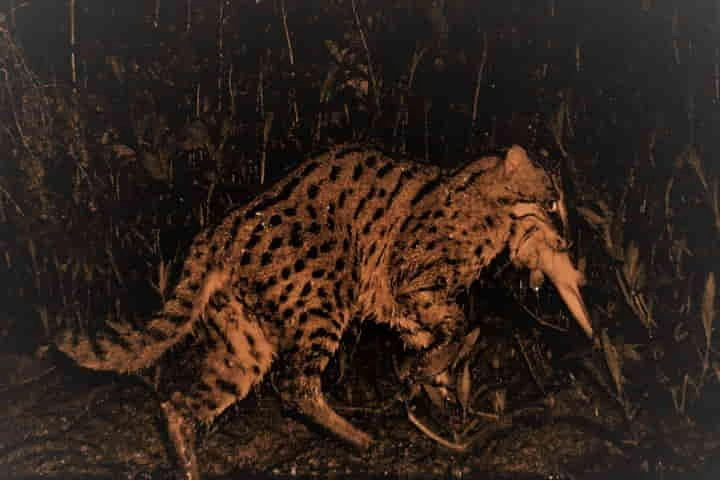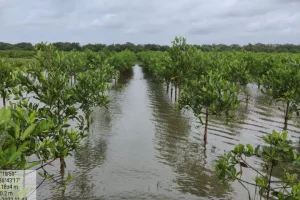The elusive fishing cat has all the attributes of an expert predator, stealth and self-restraint, when hunting for its favourite meal, the fish. Yet not much is known about how this feline hunts.
Now according to a report in sciencenews.org a study done recently throws light on how they go about their business of fishing.
These Asian cats also known as Prionailurus viverrinus sneak around the wetlands like marshes and swamps in the dead of night looking for fish which gives them ample nutrition. According to the scientists whose study was published in Mammalia, a peer-reviewed journal, they adeptly adapt their hunting strategy depending on how deep the water is in order to get maximum mileage.
As per Tiasa Adhya, the study’s co-author, the report offers “the first detailed look at how the fishing cat hunts”. A biologist based in Kolkata, she is one of the leading experts on the species and also the co-founder of The Fishing Cat Project in 2010. The project has the distinction of being one of the longest-running fishing cat research and conservation project in the world.
More than 10 years back, these mammals were not a hot subject of study, rather very sketchy details were known about them. With the aim of gathering information about them and also creating awareness an initiative was started in 2016 called Know Thy Neighbour. Under this, more than 20 residents of areas close to the fishing cat habitat were chosen to train them in installing camera traps in their respective areas. Among these places was Asia’s largest brackish water lagoon, Chilika, Odisha.
One of the people chosen was Subas Behera, a fisherman of Bhusandapur village close to Chilika and included in his daily chores is placing a camera trap at a pre-determined location and removing it in the morning. Fond of the mammal caught by his camera, he named the female “Choti” or small as one of her back legs is short.
Talking about these felines, Behera observed: “A fishing cat thinks just like a fisherman. We’re both constantly thinking about where the fish are.”
The other author of the study, Divyajyoti Ganguly, closely examined 197 videos that had been recorded by the camera traps from the period 2016 to 2018. Ganguly is a wildlife biology master’s student at the National Centre for Biological Sciences in Bengaluru.
When hunting in water which is deep and where a major portion of the body of these cats is submerged, they wait patiently for that right moment to strike. The videos showed that the cats stayed still nearly 52 per cent of the time and jumped after prey just 3.9 per cent of the time.
This approach of sitting and waiting helps the feline to conserve its energy while giving them a better chance to hunt the prey. Commenting on this Adhya said that the fishing cat “thinks hard before jumping in. It has to optimize its [energy] gain.”
The authors found that in shallow water, these cats became more active. They roamed nearly 96 per cent of the time and pawed occasionally the water to flush out fish.
Wildlife ecologist Jim Sanderson, Founder and Director of the Small Wild Cat Conservation Foundation in Corrales, New Mexico stated that this study’s insight “expands and elaborates on our understanding of the fishing cat’s semiaquatic nature.” He was not part of the study.
Also read: Study reveals a new facet of jaguars' personality as they hunt and play together
Among the two wild cats on the planet that have adapted to become semiaquatic is the fishing cat while the other is the flat-headed cat (Prionailurus planiceps) of southeast Asia.
More studies and researchers are required in order to gain knowledge and understanding of fishing cats and this includes knowing their number. So far, no national counts have been conducted in the 10 countries they are known to exist.
The need to know more is vital as these creatures are threatened increasingly because of loss of their habitats and degradation and increasing human-animal conflict situations. They have been classified as vulnerable by the International Union for the Conservation of Nature.
Elaborating on this, Sanderson said: “Living off fish inevitably brings fishing cats into conflict with people doing the same thing. That’s why fishing cat conservation means working with the local people.”




















